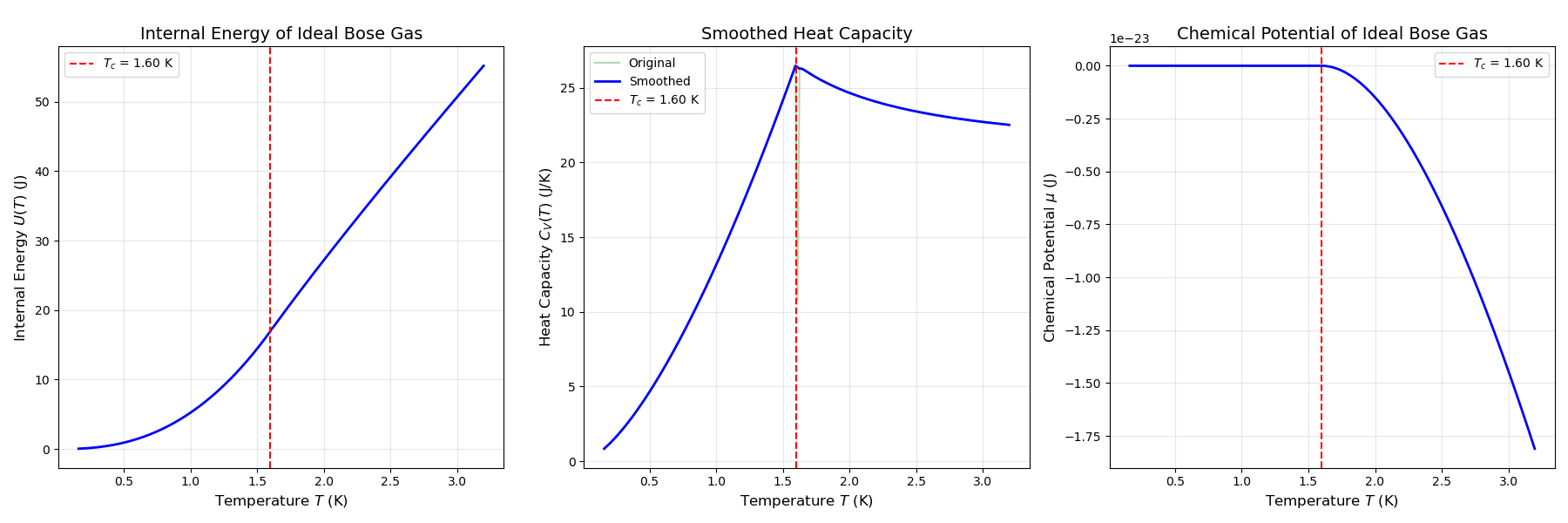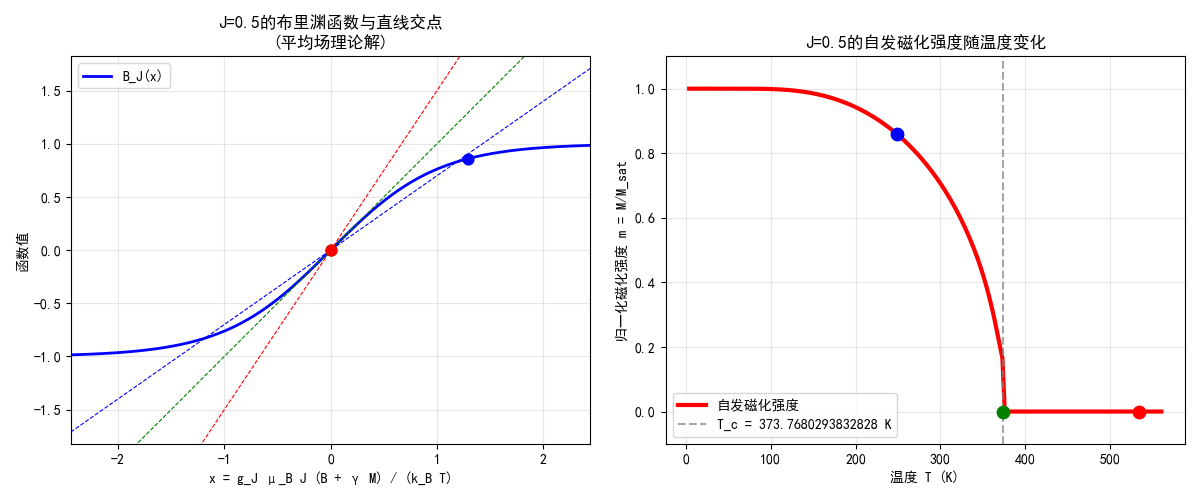晶体的结合
原子的负电性
晶体结合的类型
金属键
共价键
sp3杂化
离子键
范德瓦耳斯键
氢键
混合键
晶体中原子的聚集是原子间相互作用的结果,这种使原子发生聚集的强烈的相互作用就是化学键。考虑波恩近似,一个两原子体系的能量为:
E=\frac{p_1^2}{2m}+\frac{p_2^2}{2m}+\frac{q_1q_2}{4\pi\epsilon_0 r}+E_{R}其中,$E_R$是电子的能量。在两原子相互靠近时,不仅会受到核间的库伦斥力,价电子的重新排布也会影响作用力$-\dfrac{\partial E(R)}{\partial R}$。价电子的重新分布情况取决于原子本身束缚电子的能力,所以,我们以下首先介绍原子本身束缚电子的能力——电负性。
原子的负电性Mulliken考虑使用原子的电离能(ionization energy)和电子亲和能(electron affinity)来定义原子的电负性:
\chi=\frac{K_m}{2}(I+E_A)其中,$I$是原子的电离能,$E_A$是原子的电子亲和能。$K_m$是一个常数,通常使得Li的电负性为1.0。除此之外,还有P ...
晶体结构及其平移对称性
晶格及其平移对称性
晶体结构
晶格的数学描述
初基元胞
单胞
维格纳-塞茨(Wigner-Seitz)元胞
倒点阵
晶体的宏观对称性
对称操作
对称素
平移对称性对宏观对称性的限制
对称素的组合规则
简单晶体结构的对称素
晶体点阵和结构的分类
晶体点群
点阵中的高对称点
晶体的X射线衍射
布拉格反射公式
劳厄条件
晶格及其平移对称性晶体结构几种常见的晶体结构:
简单立方晶体结构(simple cubic structure,sc)
体心立方晶体结构(body-centered cubic structure,bcc)
面心立方晶体结构(face-centered cubic structure,fcc)
六角密堆积晶体结构(hexagonal close-packed structure,hcp)
金刚石结构(diamond structure)
NaCl结构
CsCl结构
闪锌矿结构
钙钛矿结构
晶体结构
原子数
配位数
原子堆积率
常见例子
sc
1
6
0.52
极少
bcc
2
8
0.68
碱金属
...
固体物理绪论
本专题参照Kittle的《固体物理学导论》和胡安的《固体物理学》。
固体物理Content
晶体结构及其平移对称性
晶体的结合
晶格动力学
金属电子论
能带论
Bloch电子动力学
研究固体的物理学性质,首先得从其几何学性质出发,这是我们研究 晶体结构及其平移对称性 的原因。晶体学可以作为一门专门的学科,结合群论来研究。
从经典图像可以得到 晶体的结合 。
我们知道固体的量子力学描述实质上是一个多体问题。假设有N个离子实和NZ个电子,系统的哈密顿量可以写成:
H=\underbrace{\sum_i\frac{\vec{p_i}^2}{2m_e}}_{\text{电子动能}}+\underbrace{\sum_n\frac{\vec{p_n}^2}{2M_n}}_{\text{离子实动能}}+\underbrace{\frac12\sum_{i\neq j}\frac{e^2}{|\vec{r_i}-\vec{r_j}|}}_{\text{电子电子相互作用}}+\underbrace{\frac12\sum_{n\neq m}\frac{Z_nZ_m e^2}{|\vec{R_n} ...
生物物理Content
本专栏主要参考Philips的《细胞的生物物理学》。坦诚地说,我不认为这本书的架构对于物理专业的学生是友善的,因为这本书将各个模型打散,进而适应不同阶段的物理水平看上去很散乱。在这个专栏里面,我尽量将上课讲到的模型进行了统一的整理(事实上我们的老师也是这么做的)。
生物物理的主要内容为利用物理知识(尤其是热统的知识)来构建模型,进而解释生物现象。次要知识为生物的实验方法和概念。本专栏聚焦于模型的构建。
生命系统的空间和时间尺度
基础的数理化知识
平衡态模型
动力学模型
生物网络
生命系统的空间和时间尺度
一些重要的生物尺度
Relativistic-QM
将非相对论性量子力学(NRQM)推广到相对论情形的尝试注定会是失败的,因为量子力学要求的概率守恒在相对论中不再成立,能量会产生新的粒子,因此量子场论(QFT)才是正确的框架。不过,当粒子的能量较小的时候,我们可以认为没有新粒子的产生,进而构建相对论性量子力学(RQM),Klein-Gordon方程和Dirac方程就是那时沿此思路所得的两个产物。
Klein-Gordon方程具有一些神奇的困难,不过Dirac方程却是一个很好的过渡,其以很自然的方式:
导出电子的朗德因子
导出了氢原子光谱精细结构
预言了带正电荷的反粒子——正电子的存在
Dirac方程仍然存在负能解的问题,这就是狄拉克之海的由来。
在此之前,我们先介绍有用的单位制。
自然单位制\hbar=c=1
$c=1$意味着时间和空间的单位是一样的。同时,质能方程$E=mc^2$变为$E=m$,意味着质量和能量的单位也是一样的。
$\hbar=1$意味着长度的量纲是动量的倒数,同时也是能量单位的倒数。
克莱因-戈登方程相对论中,粒子的能量为:
E=\frac{p^2}{2m}\Rightarrow E=\sqrt{p^2+m^2 ...
Scattering-Theory
Classic Scattering Theory
Differential Cross Section
Rigid Sphere Scattering
Rutherford Scattering
Quamtum Scattering Theory
Scattering Amplitude
Green Function Method
Operator Form
Optical Theorem
Example: Square Well
Example: Yukawa Potential
Classic Scattering TheoryDifferential Cross Section
微分散射截面定义为:
D(\theta)=\frac{d\sigma}{d\Omega}其中$d\sigma$是单位立体角$d\Omega$内的散射截面。显然,微分散射截面是一个碰撞参数$b$或角度$\theta$的函数。其中:
d\sigma =4\pi bdb,d\Omega=4\pi \sin\theta d\theta所以:
D(\theta)=\frac{d\sigma}{d\Om ...
量子力学2Content
量子力学2主要参考课程讲义以及Sarkari的《现代量子力学》。
Content:
Basic Concept
Density-Matrix
Quantum Dynamics & Quantum Geometry
Angular Momentumn and Symmetry
Approximation Method
Time-Dependent-Perturbation
WKB-Approximation
Scattering-Theory
Relativistic-QM
EPR-Paradox
系综理论
相空间和刘维尔定理
系综理论
微正则系综
等概率原理
微正则系综的热力学公式
单原子经典理想气体
爱因斯坦的固体热容理论
正则系综
正则系综的热力学公式
正则系综的便利性
正则系综和微正则系综的联系
实际气体
德拜的固体热容理论
巨正则系综
吸附现象
点吸附(0维吸附)
面吸附(2维吸附)
表格
相空间和刘维尔定理最概然分布的方法处理近独立的粒子,但是不能处理有强相互作用的粒子,这时候就要请出平衡态统计物理的普遍理论——系综理论。
在经典力学中,N个全同粒子(每个粒子的自由度为r)的总自由度为$f=Nr$。那么可以通过广义坐标$q_i,i=1,\cdots,f$和广义动量$p_i,i=1,\cdots,f$构成2f维度的相空间。系统的运动状态由哈密顿正砸方程决定,即
\frac{dq_i}{dt}=\frac{\partial H}{\partial p_i},\frac{dp_i}{dt}=-\frac{\partial H}{\partial q_i}对于保守系统,哈密顿量就是系统的能量,即
H(q_1,\cdots,q_f,p_1,\cdots,p_f)=E这 ...
玻色统计和费米统计
热力学统计量表达式
弱简并理想玻色气体和费米气体
玻色-爱因斯坦凝聚(BEC)
热辐射和光子气体
瑞利-金斯公式
维恩公式
普朗克公式
金属中的自由电子气体
满足定域或非简并条件的粒子系统可以采用玻尔兹曼统计,而不满足非简并条件的系统,需要用玻色-爱因斯坦统计或费米-狄拉克统计处理。
不满足非简并条件的气体叫做简并气体。不同于理想气体,简并气体不满足定域条件。尽管气体之间的距离更大,但是气体粒子本身的波包尺度也更大。同样的道理,固体虽然原子之间间距小,但是波包更小,是定域系统。
粒子的简并情况也有所区别,具体可根据逸度$z=e^{-\alpha}$进行分类:
理想气体(非简并)
理想玻色/费米气体(弱简并)
玻色-爱因斯坦凝聚
光子气体
自由电子气(强简并)
$e^{-\alpha}\ll1$
$e^{-\alpha}\ll1$但不可忽略
$e^{-\alpha}\to 1^{-}$
$e^{-\alpha}= 1$
$e^{-\alpha}\gg 1$
其中,理想气体因为忽略相互作用,所以化学势$\mu$接近0,但我们在下面会讨论如果不忽略其影响会 ...






